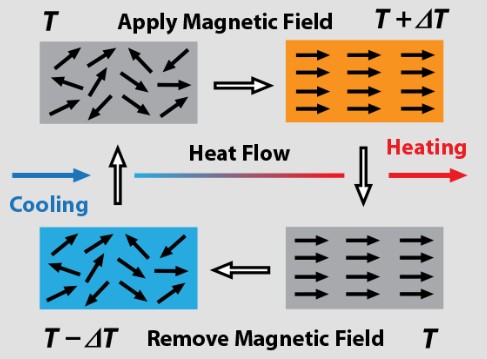Focus: GS-III Science and Technology
Why in news?
Scientists have developed a rare-earth-based magnetocaloric material that can be effectively used for cancer treatment.
Details
- In magnetic hyperthermia, magnetic nanoparticles are subjected to alternating magnetic fields of few Gauss, which produce heat due to magnetic relaxation losses.
- Magnetic hyperthermia is studied to try to address the issues of side effects of cancer treatment like chemotherapy.
- One of the major drawbacks in magnetic hyperthermia is the lack of control of temperature, which may damage the healthy cells in the body and also have side effects like increased blood pressure etc.
- Magnetocaloric materials can provide controlled heating.
- This method, when used in conjunction with radiation therapy, would reduce the side effects, damage caused to the human body and also reduce the treatment time of cancer tumours.
Magnetocaloric Effect
- The Magnetocaloric Effect is commonly seen as a reversible heating and cooling of magnetic solids upon their exposure to a varying magnetic field.
- An increase or decrease in the strength of an external magnetic field modifies the ordering of the magnetic moments of the atoms that form the material, thus altering magnetic entropy.
- When there is no heat exchange with the environment, the magnetic entropy change must be compensated by a change in material’s temperature, i.e. it either heats or cools.
- The Magnetocaloric Effect is the strongest near the material’s Curie temperature, i.e. the temperature of its spontaneous magnetic ordering/disordering.

Magnetocaloric Materials
- Metals
- Alloys
- Complex Oxides & Ceramics
Magnetic hyperthermia
- Magnetic hyperthermia is an experimental treatment for cancer, based on the fact that magnetic nanoparticles can transform electromagnetic energy from an external high-frequency field to heat.
- This is due to the magnetic hysteresis of the material when it is subjected to an alternating magnetic field.



